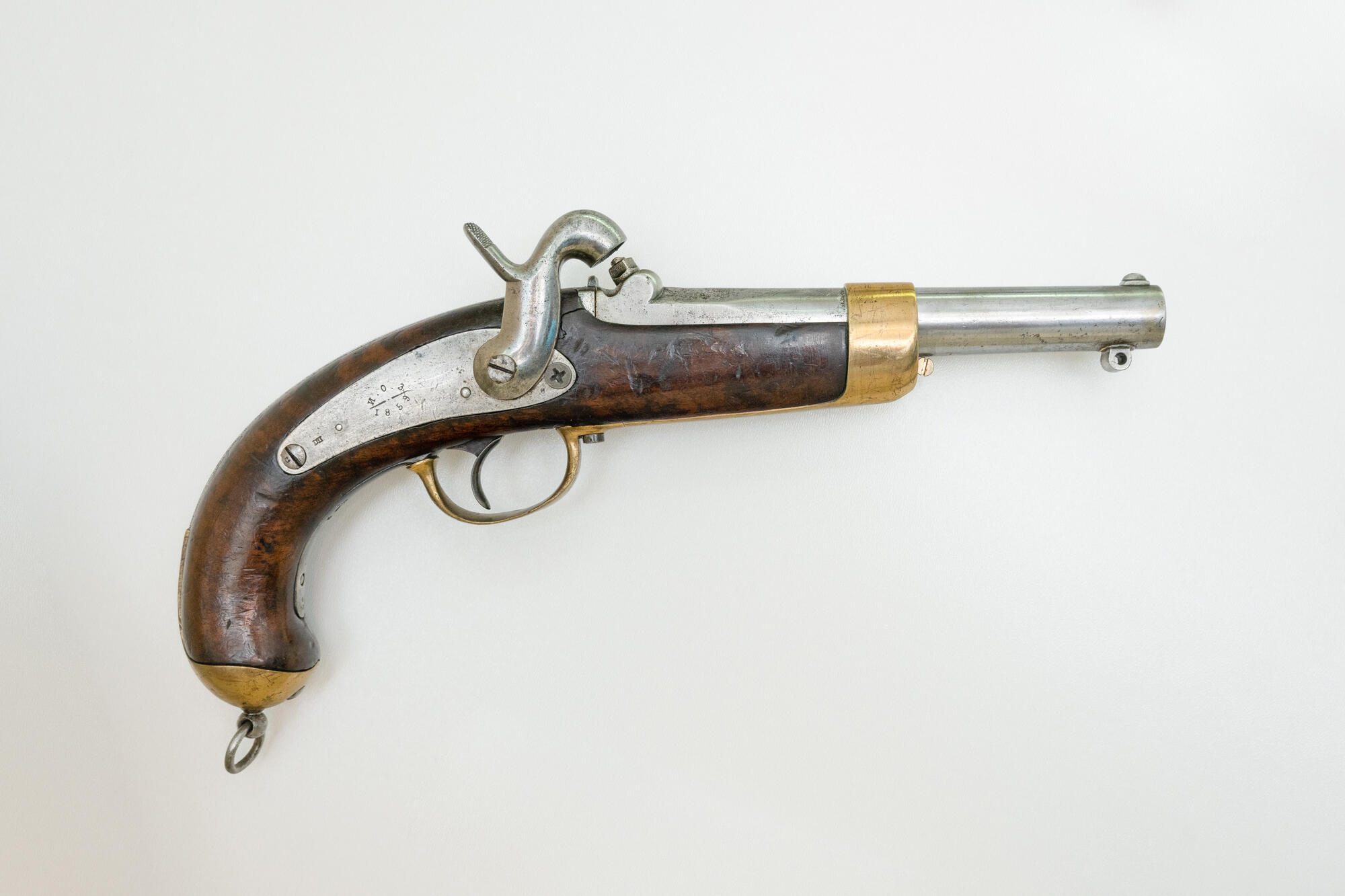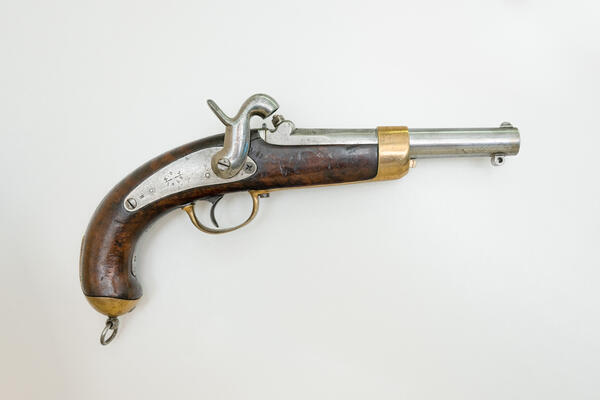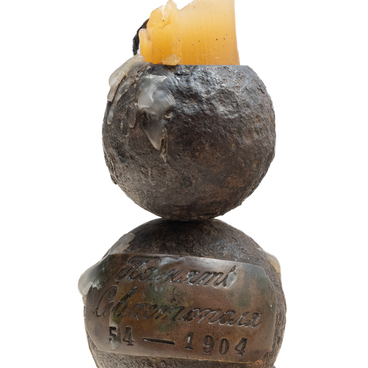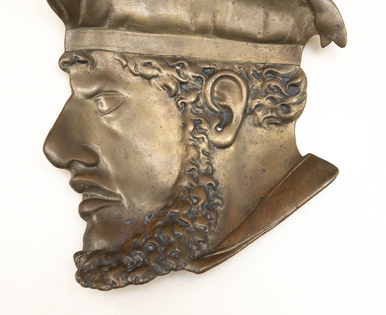The collection of the museum contains a smooth-bore percussion pistol of the 1848 model. According to the stamps “1859” on the key board and “1858”, on the upper side of the metal part of the barrel, it can be established that the pistol was made no later than 1859. The weapon belongs to muzzle-loading pistols, which were loaded with ball-shaped bullets.
The pistol consists of a metal barrel and an arched wooden handle. At the bottom of the handle is the trigger pull, and at the top is the hammer. At the end of the barrel there is a fore sight — part of a mechanical sight. A ring is attached to the handle to hang the weapon from the belt.
The main mechanism of these pistols was a flintlock. They first appeared at the beginning of the 16th century, presumably in the Middle East, and later spread throughout Europe. Gradually, such pistols replaced weapons with wick mechanisms, where gunpowder was ignited with a wick, and wheel mechanisms, in which a spark was struck by rotating notched wheels.
To load the percussion pistol, the soldier poured gunpowder from a special powder flask into the barrel and lowered a round bullet into the barrel. It was driven deep into the trunk with a ramrod. When the bullet was in the barrel, the soldier poured a pinch of gunpowder onto a special metal piece — the flash pan. Then he cocked the trigger, at the end of which sharply sharpened flint was clamped inside the mechanism.
When the soldier pulled the trigger, the mainspring straightened, released the hammer axis and hit the metal flint plate (steel). Sparks ignited the gunpowder on the flash pan, then the powder charge in the barrel. The shot was fired.
In the 16th — 19th centuries, flintlock guns and pistols were in service in all countries. In Russia, weapons with a caliber of 17.5 to 21.5 millimeters and weighing from 4 to 5.6 kilograms were most often used. The firing range of a flintlock gun at a detached person was from 40 to 100 meters, and on a group of people — 100-200 meters.
The pistol entered the museum from the collection of the State Historical Museum in 1955. Some of its parts were made at the Izhevsk Arms Factory in 1858-1859.
Similar pistols were in service with cuirassiers, dragoons, horse and foot lancers and Cossacks. They were mainly used by privates, non-commissioned officers and musicians — trumpeters and drummers.
The pistol consists of a metal barrel and an arched wooden handle. At the bottom of the handle is the trigger pull, and at the top is the hammer. At the end of the barrel there is a fore sight — part of a mechanical sight. A ring is attached to the handle to hang the weapon from the belt.
The main mechanism of these pistols was a flintlock. They first appeared at the beginning of the 16th century, presumably in the Middle East, and later spread throughout Europe. Gradually, such pistols replaced weapons with wick mechanisms, where gunpowder was ignited with a wick, and wheel mechanisms, in which a spark was struck by rotating notched wheels.
To load the percussion pistol, the soldier poured gunpowder from a special powder flask into the barrel and lowered a round bullet into the barrel. It was driven deep into the trunk with a ramrod. When the bullet was in the barrel, the soldier poured a pinch of gunpowder onto a special metal piece — the flash pan. Then he cocked the trigger, at the end of which sharply sharpened flint was clamped inside the mechanism.
When the soldier pulled the trigger, the mainspring straightened, released the hammer axis and hit the metal flint plate (steel). Sparks ignited the gunpowder on the flash pan, then the powder charge in the barrel. The shot was fired.
In the 16th — 19th centuries, flintlock guns and pistols were in service in all countries. In Russia, weapons with a caliber of 17.5 to 21.5 millimeters and weighing from 4 to 5.6 kilograms were most often used. The firing range of a flintlock gun at a detached person was from 40 to 100 meters, and on a group of people — 100-200 meters.
The pistol entered the museum from the collection of the State Historical Museum in 1955. Some of its parts were made at the Izhevsk Arms Factory in 1858-1859.
Similar pistols were in service with cuirassiers, dragoons, horse and foot lancers and Cossacks. They were mainly used by privates, non-commissioned officers and musicians — trumpeters and drummers.



